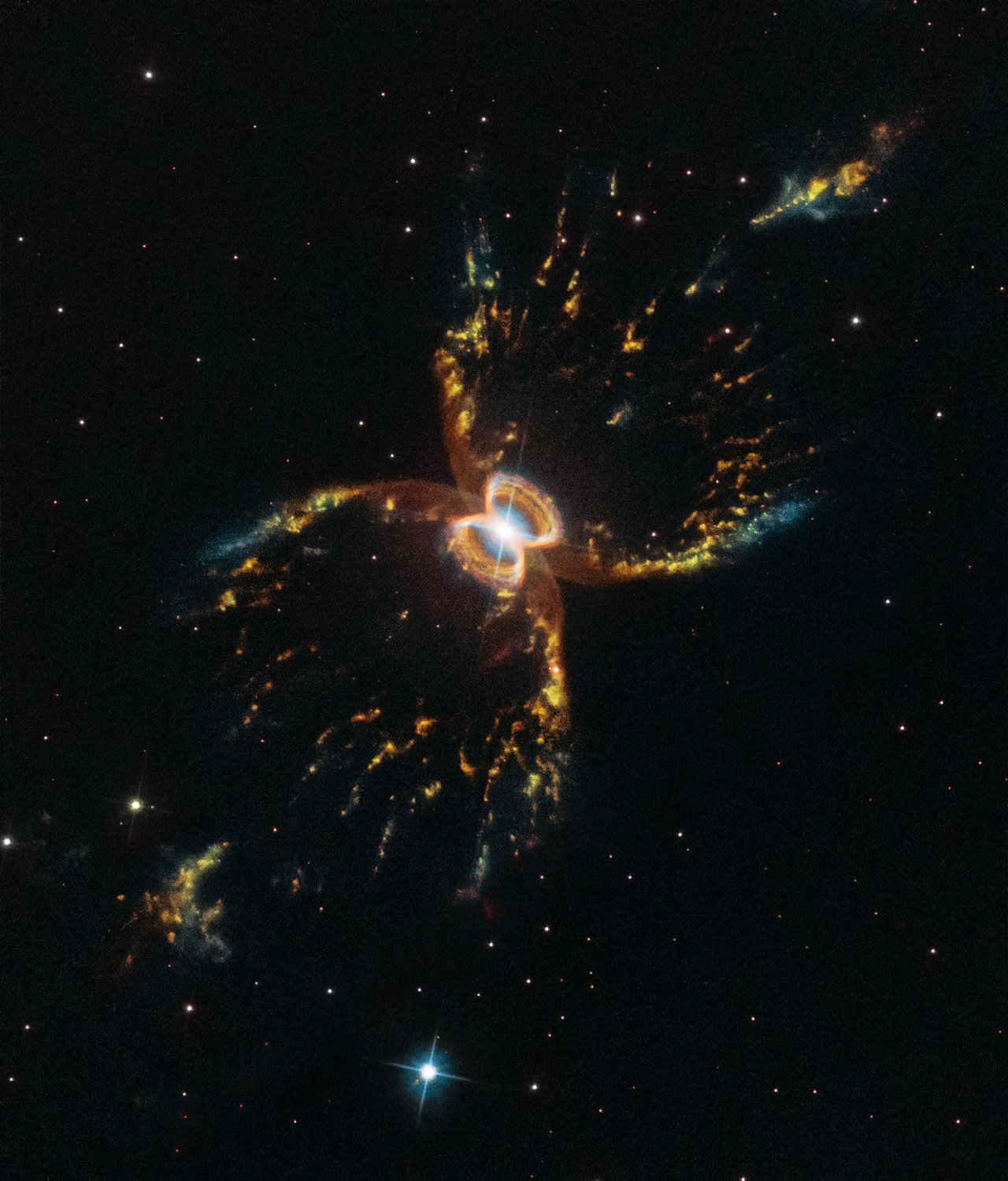The Hubble Just Took a Gorgeous New Image of the Southern Crab Nebula's Wonky Gas Bubbles

Twenty years ago, the Hubble Space Telescope revealed a giant crab in the sky. Now, just before its 29th birthday (Hubble was launched into space April 24, 1990), the telescope again trains its lenses on the Southern Crab Nebula to provide the world with a stunning reminder that, a) the cosmos is mysterious and beautiful, and, b) launching giant cameras into space is a really neat idea.
Every year, Hubble spends a small portion of its time snapping a gorgeous anniversary picture like this one, according to a statement from the European Space Agency (ESA), the agency that manages the telescope in cooperation with NASA. The decision to image the Southern Crab Nebula for this year's birthday photo recalls the first encounter between the photographer and its subject in 1998, when Hubble imaged the complete hourglass structure of the nebula for the first time. [Spaced Out! 101 Astronomy Images That Will Blow Your Mind]
The Southern Crab Nebula sits in the constellation Centaurus, about 7,000 light-years away from Earth. What look like the legs and pincers of a cosmic crab are actually twin bubbles of gas and dust burped out by a pair of stars at the nebula's center. This celestial Odd Couple is composed of one red giant — a huge, dying star in the process of molting its outer shell of matter — and one white dwarf — the tiny, dead husk of hot crystal that remains once a red giant has loosed its last burst of gas.
A similar celestial explosion could even happen again under Hubble's watch, turning this giant space crab into — what? A Three-Leafed Clover Nebula? A Sprig of Holly Nebula? Call us crabby but, somehow, those nicknames just don't have the same ring to them.
- 15 Amazing Images of Stars
- 9 Strange, Scientific Excuses for Why We Haven't Found Aliens Yet
- Rainbow Album: The Many Colors of the Sun
Originally published on Live Science.
Sign up for the Live Science daily newsletter now
Get the world’s most fascinating discoveries delivered straight to your inbox.

Brandon is the space/physics editor at Live Science. His writing has appeared in The Washington Post, Reader's Digest, CBS.com, the Richard Dawkins Foundation website and other outlets. He holds a bachelor's degree in creative writing from the University of Arizona, with minors in journalism and media arts. He enjoys writing most about space, geoscience and the mysteries of the universe.









